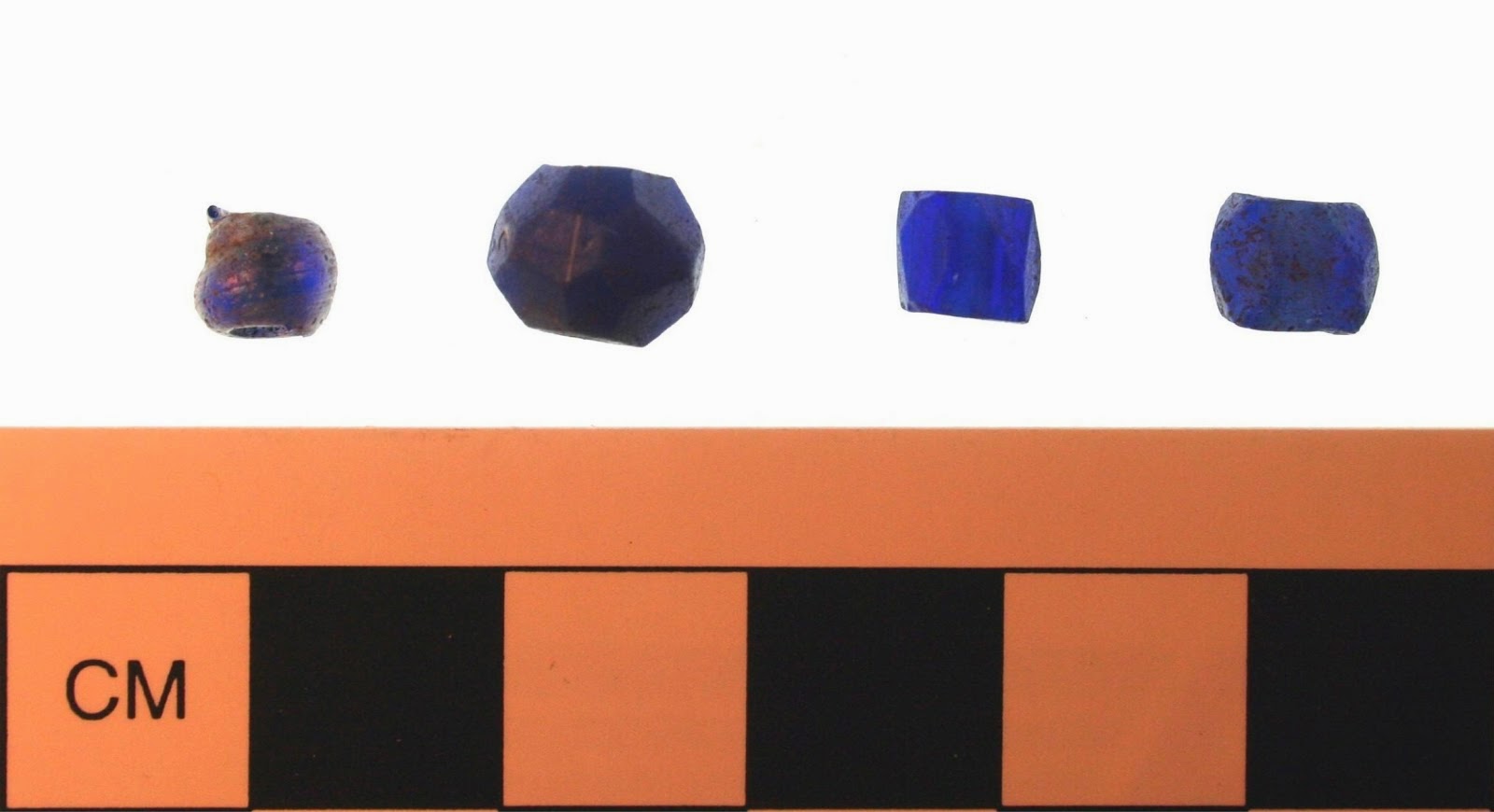We recently hosted our first Archaeology Works: Beads Workshop at the New Smyrna Museum of History. Just in case you missed it, here's five important things to know about beads in the archaeological record!
1) Beads are found a lots of different sites.
From prehistoric middens to 19th century trash pits, beads are found at site throughout time. Some of the earliest beads in Florida date to the Paleoindian Period. They are tiny stone beads found in spring sites in the Apalachicola Bay area. We continue to find beads in trash pits, cemeteries, structural remains and more throughout Florida's history.
 |
| These shell beads from Windover Pond in Titusville are almost 7,500 years old! |
 |
| Archaeologists found glass beads in the cabins of slaves at Kingsley Plantation during the early 1800s. |
 |
| Pedro Menendez brought these glass beads with him to St. Augustine in 1565. |
2) Beads are made from lots of different materials.
As beads were made in different places at different times, they're also made from all sorts of materials: bone, stone, glass, wood, seeds and more! The material can be clues to the time and place of the beads manufacturing, as well as tell a lot about the people who made and used them.
 |
| These bone beads are also from the Fountain of Youth site, St. Augustine. |
 |
| Shell and shark's tooth beads I helped uncovered at Mill Cove Complex, a Mississipian site in Jacksonville. |
3) Beads can tell us about trade and culture.
Shell beads are found at Cahokia, far from their coastal source. Glass beads traveled with the Spanish, British and French to the America and Africa. Beads can help archaeologists uncover how people and objects moved around the world!
 |
| Some of the earliest trade beads include chervons (top left). Fountain of Youth, St. Augustine. |
4) Glass beads can be very complicated to study.
Glass beads have subtle differences based on how they were made. Archaeologists try to determine how beads where made to help them decipher when and where they were made. Certain trends and techniques can be traced back to glass shops.
 |
| Molded bead classification guide from Kidd and Kidd, 1970. |
 |
| Drawn bead classification guide from Kidd and Kidd, 1970. |
5) Beads are a unique personal item.
Beads can represent social status, religious practices and even economics of the past. People still treasure items like this today, and trying to tease this out in the past can be difficult but always very rewarding.
 |
| Selected beads from the cemetery at Mission Santa Catalina de Guale on St. Catherine's Island, GA. |
Text and some photos by Emily Jane Murray, FPAN Staff. Other artifact photos courtesy of the University of Florida, the Florida Museum of Natural History, Parks Canada and the American Museum of Natural History.








